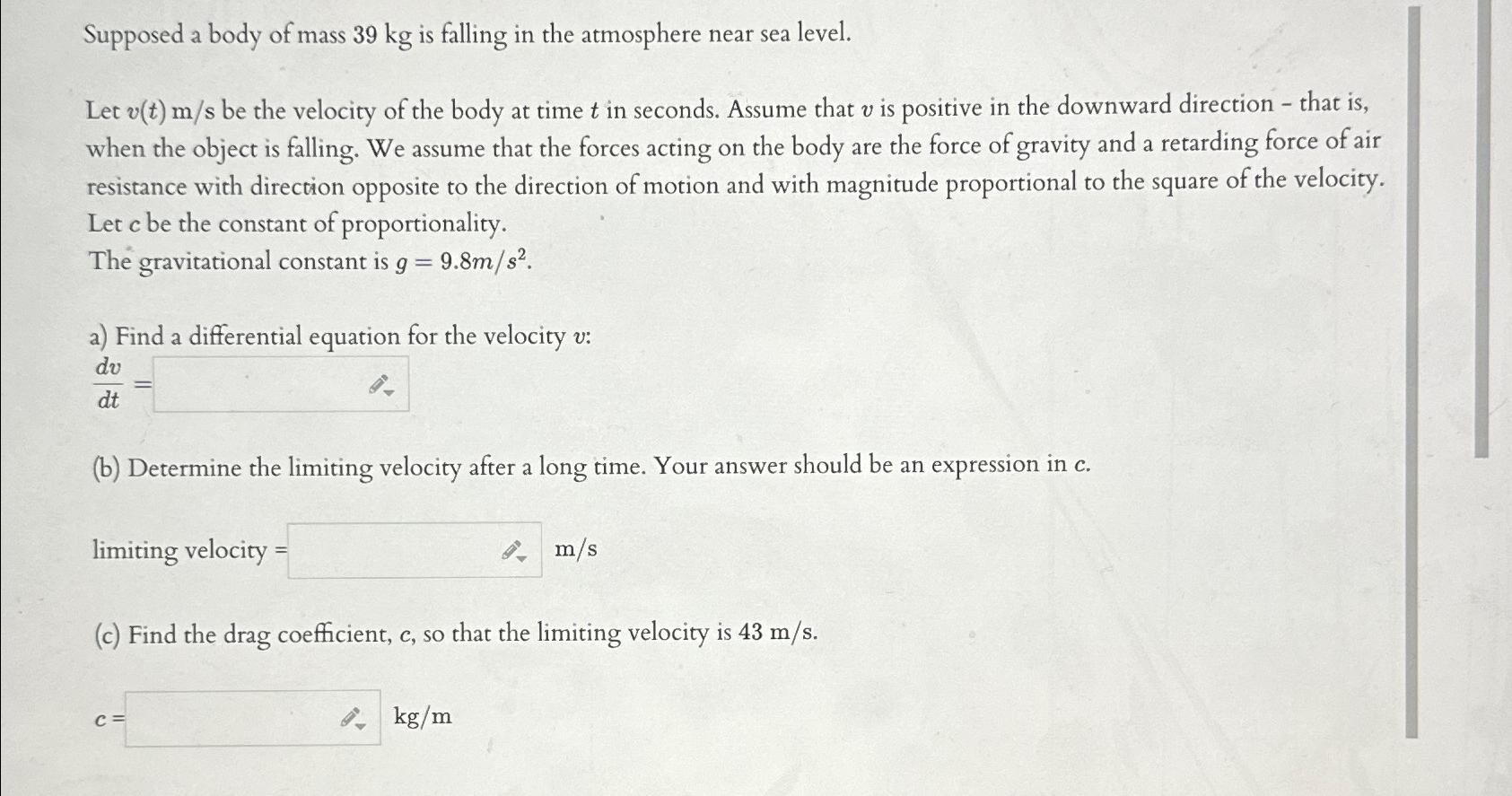Answered step by step
Verified Expert Solution
Question
1 Approved Answer
Supposed a body of mass 39 kg is falling in the atmosphere near sea level. Let v(t) m/s be the velocity of the body

Supposed a body of mass 39 kg is falling in the atmosphere near sea level. Let v(t) m/s be the velocity of the body at time t in seconds. Assume that v is positive in the downward direction - that is, when the object is falling. We assume that the forces acting on the body are the force of gravity and a retarding force of air resistance with direction opposite to the direction of motion and with magnitude proportional to the square of the velocity. Let c be the constant of proportionality. The gravitational constant is g = 9.8m/s. a) Find a differential equation for the velocity v: dv dt D (b) Determine the limiting velocity after a long time. Your answer should be an expression in c. limiting velocity= m/s (c) Find the drag coefficient, c, so that the limiting velocity is 43 m/s. kg/m C=
Step by Step Solution
★★★★★
3.50 Rating (153 Votes )
There are 3 Steps involved in it
Step: 1
a To find the differential equation for the velocity v we consider the forces acting on the ...
Get Instant Access to Expert-Tailored Solutions
See step-by-step solutions with expert insights and AI powered tools for academic success
Step: 2

Step: 3

Ace Your Homework with AI
Get the answers you need in no time with our AI-driven, step-by-step assistance
Get Started


